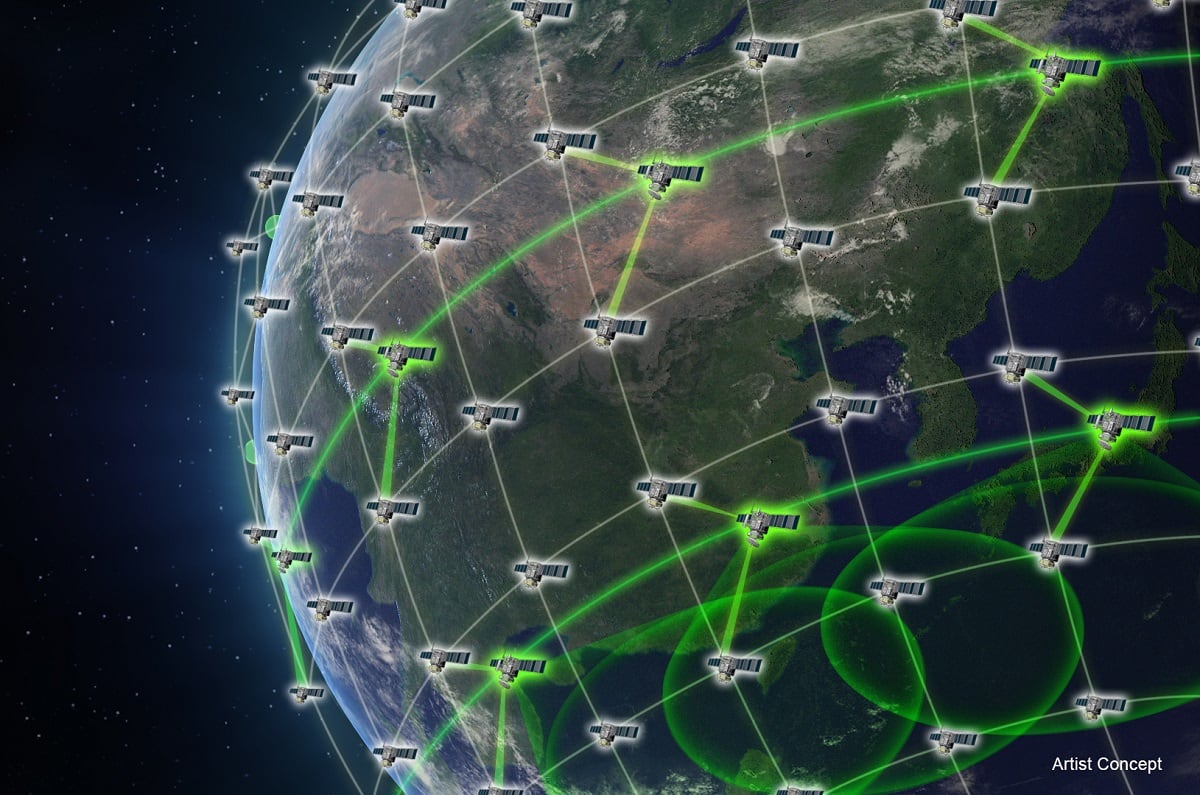The U.S. Air Force has begun deploying thousands of personal devices to military personnel and health care providers that allow them to access classified information from home or outside of the office, even though the devices themselves are unclassified.
The devices were supposed to be demonstrated during a test of the Air Force’s Advanced Battle Management System in April, which was delayed to August or September due to the ongoing COVID-19 situation. With the test pushed back, the Air Force decided to begin rolling out the devices to support the fight against COVID-19.
“Even in a virtual, COVID environment, the team pulled together very rapidly to do something that we were going to demonstrate in April as a prototype,” said Air Force Chief Architect Preston Dunlap during a virtual Mitchell Institute event May 7.
The devices are loaded with SecureView, a software architecture built on an “unclassified at rest” model.
“(The software has) the ability to process classified information on a device that’s unclassified when you’re not using it. So you could literally throw it on the street—no problem. I wouldn’t recommend it, but no problem. But then when you use it, you actually can operate and access the information you need much like you would in your office,” explained Dunlap.
“We’re deploying about 1,000 of those in about three week sort of cycles now to get them out to the force,” said Dunlap.
In addition, the Northern Command ABMS team was able to deploy unclassified tablets with SecureView to healthcare workers in New York City and aboard the hospital ship previously deployed to New York City, the USNS Comfort. The team is also pushing out data and applications to those devices to give users real time awareness of patients’ health status, Dunlap said. He also said they were using artificial intelligence algorithms to predict how COVID-19 will spread.
The software was developed by the Air Force Research Laboratory as part of DeviceOne, a line of effort under the Air Force’s ABMS family of systems.
ABMS is the Air Force’s contribution to the Department of Defense’s Joint All-Domain Command and Control concept, an ongoing effort to ensure connectivity between the services. Under JADC2, the Department’s leaders want sensors to feed data to shooters in near-real time, regardless of domain. As envisioned, JADC2 systems should enable National Reconnaissance Office satellites to feed data to U.S. Army shooters, or U.S. Navy sensors to feed data to Air Force shooters.
RELATED

Dunlap noted that the use of DeviceONE to fight COVID-19 represented a real world on ramp of ABMS.
“So from both a classified and unclassified world, seamless devices, mobility, data and applications where you need it, when you need it, are actually being demonstrated before our eyes in a real world current operation,” said Dunlap. “In some sense, you could call that we’re actually doing a current ops on ramp to be able to support people and keep people safe.”
The Air Force is largely agnostic towards which hardware is used for DeviceONE, said Dunlap. The program utilizes off-the-shelf consumer devices, enabling easy upgrades and keeping costs low compared to other DoD technology efforts.
“For DeviceONE, all of the work that the team did was software-based and software security-based, and the hardware piece of that (we) are procuring and competing across the vendors that can provide the laptops, the tablets, the servers in the backend and so forth,” said Dunlap.
While the system can be used to access any classification level, the configuration rolled out for COVID-19 support was limited to just the secret level. However, Dunlap said the software can be used for any classification level and was currently in use around the world by several combatant commanders.
“It’s incumbent for us to be able to provide the security and software on top of (the hardware) that enables our operators to be on that island, on that aircraft, in that Humvee, in the tents, and be able to get the information they need,” said Dunlap.
And Dunlap added that the delayed ABMS test will be expanded when it does occur, incorporating Strategic Command and Space Command. Dunlap also hinted that the ABMS test after the August/September test will include Indo-Pacific Command, bringing the on ramp to the operational edge.
“There’s going to be a variety of key adjustments there,” said Dunlap. “Before, in December, it was mostly a Northern Command focus. We now have a Space Command and a Space Force, and so the predominant thing here is we’re going to have the U.S. Space Command Commander, Gen. (John) Raymond, actually be the supported commander for the first time as opposed to a supporting commander.”
Nathan Strout covers space, unmanned and intelligence systems for C4ISRNET.








